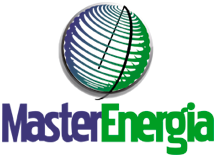GAS BLENDING
GAS MIXER
The term “gas” is used to indicate a gaseous state of the matter. On a physical level, a substance is defined as “gas” when its boiling temperature is significantly lower than ambient temperature. An example is the Earth’s atmosphere, which is made of mainly nitrogen and oxygen.
A gas mixture includes two or more gases. Components may be solid, liquid or gaseous. An example of a mixture of gaseous, liquid and solid substances is the air. Air contains nitrogen (78%), oxygen (21%), argon (1%), carbon dioxide (0.04%) and a variable percentage of water vapour. Dust particles are the solid component, while water drops constitute the liquid component.
Tests demonstrate that a gaseous fluid shows different thermo-dynamic and thermo-kinetic reactions, depending on whether it is used alone or in a heterogeneous mixture.
In order to be mixed, gases should not react with one another, as gas blending is an irreversible process leading to an increase in entropy. To describe the behaviour of a mixture, its composition and physical properties need to be known and studied through a series of experiments. Real gases can be studied by using thermo-dynamic charts resulting from a direct analysis of the mixture itself.
GAS MIXER SYSTEM
The gas mixer precisely dilutes and blends high concentration certified gas cylinders to generate precise gas calibration standards, create gaseous atmospheres, or produce gas mixes for analytical research and process gas mixture purpose. The term “mixer system” indicates a system designed to mix two or more substances by adding a preset amount of a substance to another one. The process can be continuous or take place in cycles. The gas mixer system is based on the principles of thermodynamics regarding fluids and aim at mixing specific concentrations of two or more gases. The equipment fulfils three main functions: gas mixing, measuring and analysis, which is why the units are equipped with valves to regulate the gas flow and to ensure thorough mixing. Each channel is provided with a filter, an isolation valve, a needle valve, a pressure indicator and an ATEX-approved flame-proof filter. The mixing chamber needs to make sure the process is completed with no laminar flow.
Master Energia is committed to meeting customers’ needs as far as a safe use of gases is concerned. Our team of professionals boasts a solid background in the field of gas chemical transformation and 30-year long experience working with gas mixers.
Gas blending is used in a wide range of applications, such as food industry, beverage industry, glass industry, medical technologies, metal cutting and welding, heat treatments, laser technologies, underwater technologies, custom solutions.
When used for food packaging, mixtures are made mainly of carbon dioxide (CO2), nitrogen (N2) and sometimes oxygen (O2). These gases may be used separately or combined together. Carbon dioxide presents bacteriostatic and antioxidant properties leading to a total or partial anaerobic effect, suitable for temperatures lower than +5°C. It is easily soluble in the fat and the wa-ter contained in food.
Nitrogen has an inerting effect and limits chemical oxidation. When mixed with CO2, which is partially absorbed by the liquids and the fat contained in food, nitrogen enables a minor shrinkage of the package. When air is replaced with a gas mixture, bacte-ria stop proliferating. The gas mixture composition varies depending on the food type.
When mixed with the above-mentioned gases, oxygen may be used in meat and white fish packaging, as it reacts with haemo-globin, keeping food fresh and preventing any physical alteration.
Beer undergoes specific processing and packaging procedures which rely on the use of gases, such as carbon dioxide and nitrogen, or a mixture of both.
Specific mixers enable the production of different mixtures, depending on customers’ needs.
An alternative to the process of natural air purification is the production of synthetic air, a mixture of oxygen and nitrogen for pharmaceutical use in concentrations similar to the atmospheric air. The mixer produces Synthetic air in a safe and cost-effective way, it is easy to install and proves low-consumption and low-maintenance. Anaesthetic Gas Blending is another appli-cation of mixers in healthcare.
Metal cutting and welding see the use of air and oxygen mixed with combustible gases. Welding is particularly important in the mechanical industry: depending on materials and welding procedures, several gas mixtures are used to protect the weld pool.




A number of treatments require a thorough management of the composition of forming gases. The treatment is highly even and replicable thanks to an accurate management of all the parameters of carburising: monitoring of vacuum, composition of the hardening gas mixture, pressure and temperature variations during carburising, temperature during austenitising, nitrogen pressure during the hardening phase. The requisites are met by means of specifically-designed gas blending systems.
Metal heat treatments employ specific forming gases depending on the treatment to carry out. Sometimes these mixtures also contain combustible gases, such as hydrogen. Our mixers are designed to ensure safety and feature several devices to prevent and tackle the widest range of malfunctions.



One of the most widely used laser models in manufacturing is the CO2 laser. This type of laser uses gas mixtures containing CO2, N2 and He. The laser beam is produced by the excitation and emission of CO2 molecules. The N2 gas contained in the mixture supports the transfer of energy to CO2 molecules, while He gas increases heat loss.
CO2, N2 and He mixtures are generally used in laser pantographs.



